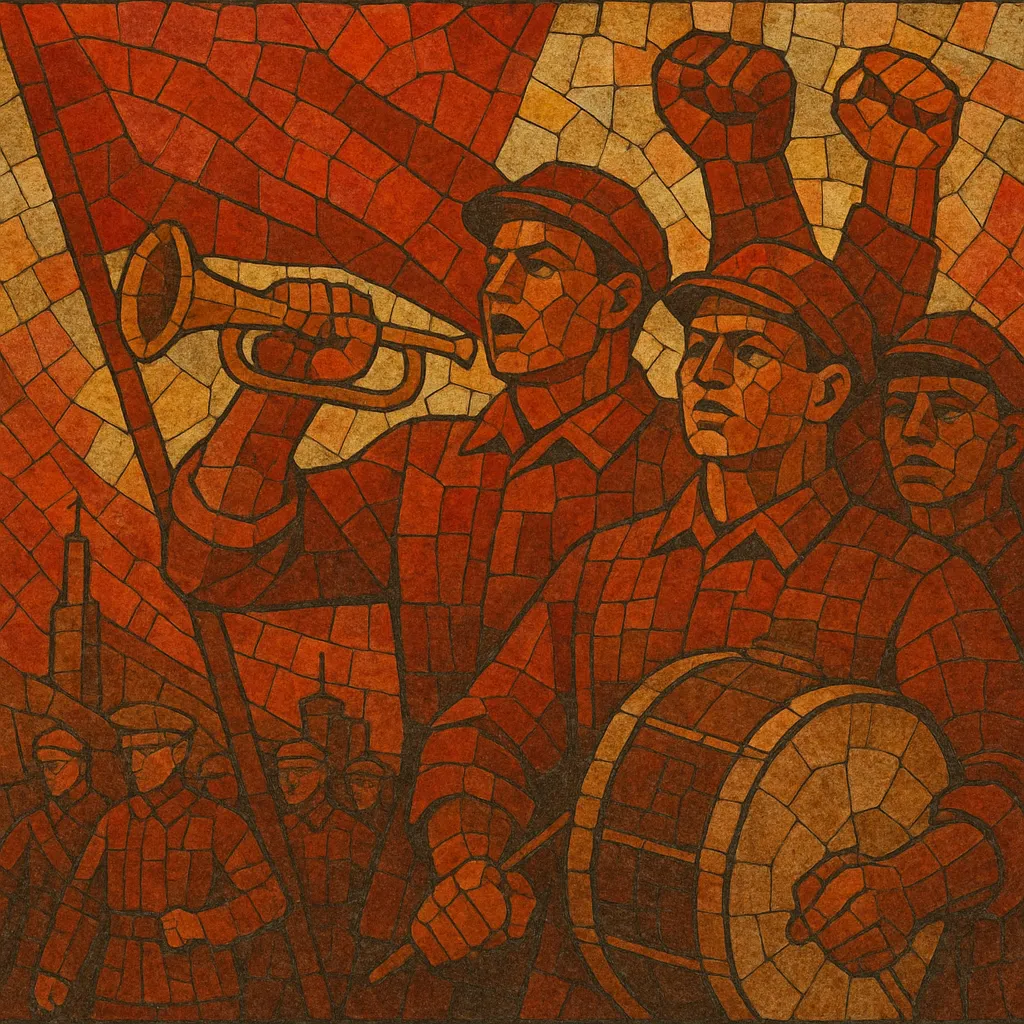Red song refers to revolutionary and patriotic mass songs from China that praise the Communist Party, socialism, workers, peasants, the People’s Liberation Army, and national unity.
Musically, they favor memorable, easily singable melodies—often pentatonic or diatonic—set to clear march-like rhythms in 2/4 or 4/4, and arranged for unison or robust choral singing with brass, snare drum, and sometimes folk-derived instrumentation. Many pieces adapt or paraphrase local folk tunes and work songs, and are performed by large ensembles or massed choirs for rallies, parades, and state ceremonies.
Lyrically, they use direct, slogan-like lines, calls-and-responses, and recurring refrains intended for mass participation. The overall affect is triumphant and mobilizing, with a strong emphasis on collective identity and patriotic fervor.
Red songs emerged in the 1930s among left-leaning Chinese composers who fused folk melodies, Western-style march rhythms, and mass choral techniques to mobilize the public. Early landmark works such as Nie Er’s March of the Volunteers (1935) and Xian Xinghai’s Yellow River Cantata (1939) exemplified the blend of patriotic narrative, simple melody, and stirring choral forces.
During the Second Sino-Japanese War and the Chinese Civil War, mass songs proliferated as tools for morale and propaganda. After 1949, red songs became central to nation-building, regularly broadcast and taught in schools, factories, and military units. Arrangements emphasized accessible choruses, rhythmic clarity, and brass-led fanfares suitable for large public performances.
The genre reached peak prominence during the Cultural Revolution, when revolutionary repertoire dominated cultural life. Folk-derived anthems like The East Is Red and newly composed praise songs were canonized, while stylistically related revolutionary operas adopted choral and march idioms to dramatize socialist narratives.
After 1976, the repertoire persisted in official contexts but coexisted with expanding pop and rock forms. Periodic revivals, including 1990s remixes and 2010s public singing campaigns, reaffirmed the repertoire’s symbolic status. Derivative styles such as Red Disco recast classic tunes with contemporary beats, while concerts and media events continue to feature red songs in commemorations and state ceremonies.


